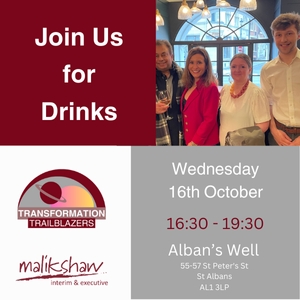Malikshaw Interim
Malikshaw's Commitment to Net Zero
Carbon Reduction Plan
Commitment to achieving Net Zero
EVISA SOLUTIONS LTD is committed to achieving Net Zero emissions by 2030.
Baseline Emissions Footprint
Baseline emissions are a record of the greenhouse gases that have been produced in the past and were produced prior to the introduction of any strategies to reduce emissions. Baseline emissions are the reference point against which emissions reduction can be measured.
|
Baseline Year: 2022 |
|
|
Additional Details relating to the Baseline Emissions calculations. |
|
|
2022 is the Baseline for reporting purposes. |
|
|
Baseline year emissions: |
|
|
EMISSIONS |
TOTAL (tCO2e) |
|
Scope 1 |
0 |
|
Scope 2 |
55.236 |
|
Scope 3 (Included Sources) |
4.195 |
|
Total Emissions |
59.431 |
Current Emissions Reporting
|
Reporting Year: 2022 |
|
|
EMISSIONS |
TOTAL (tCO2e) |
|
Scope 1 |
0 |
|
Scope 2 |
55.236 |
|
Scope 3 (Included Sources) |
4.195 |
|
Total Emissions |
59.431 |
Emissions reduction targets
In order to continue our progress to achieving Net Zero, we have adopted the following carbon reduction targets. Using these projects we project that carbon emissions will decrease over the next five years to 43 tCO2e by 2027. This is a reduction of 27.65%
Carbon Reduction Projects
Completed Carbon Reduction Initiatives
The following environmental management measures and carbon reduction projects are being implemented to achieve this plan. These include fully electric company car fleet, changes in policy initiating a reduction in company travel, increased work from home and office energy efficiency measures regarding heating and lighting. The carbon emission reduction to be achieved by these schemes equate to 5 tCO2e, an 8.5% reduction against the 2022 baseline and the measures will be in effect when performing the contract
Declaration and Sign Off
This Carbon Reduction Plan has been completed in accordance with PPN 06/21 and associated guidance and reporting standard for Carbon Reduction Plans.
Emissions have been reported and recorded in accordance with the published reporting standard for Carbon Reduction Plans and the GHG Reporting Protocol corporate standard and uses the appropriate Government emission conversion factors for greenhouse gas company reporting.
Scope 1 and Scope 2 emissions have been reported in accordance with SECR requirements, and the required subset of Scope 3 emissions have been reported in accordance with the published reporting standard for Carbon Reduction Plans and the Corporate Value Chain (Scope 3) Standard.
This Carbon Reduction Plan has been reviewed and signed off by the board of directors (or equivalent management body).
Signed on behalf of the Supplier:
Date: 1st June 2023
Robert Shaw
Partner | Public Sector
Data Security and Privacy: Meeting New Regulations

As the UK government tightens regulations around data security and privacy, sectors like energy, transport, and construction are facing unprecedented transformation challenges. With increasing reliance on digital platforms and data sharing, safeguarding sensitive information has never been more critical.
In the coming years, the UK government is expected to enhance its data protection and cyber resilience regulations. New requirements will focus on stricter data governance, real-time reporting of breaches, and increased penalties for non-compliance. This will impact industries handling sensitive customer data, intellectual property, and operational systems.
Energy Sector: With the rise of smart grids and digital energy management, companies in the energy sector are collecting vast amounts of consumer data. The government's emphasis on privacy in this area will require energy firms to upgrade their security frameworks, protect consumer data, and ensure compliance with new standards.
Transport Sector: Digital transformation in public and private transport has led to interconnected systems, from smart ticketing to autonomous vehicles. With increased data sharing between operators, manufacturers, and regulators, the government is pushing for stronger cybersecurity protocols to prevent data breaches and infrastructure hacks.
Construction Sector: As construction adopts technologies like Building Information Modelling (BIM), data on projects, contractors, and infrastructure is being stored digitally. The sector must safeguard this sensitive information, with regulations expected to focus on securing project data against cyber threats and unauthorized access.
The key to navigating these transformations lies in assembling teams that are ready to hit the ground running. Companies and organisations in these sectors must prioritise hiring and training experts in data security, privacy law, and cybersecurity. Building a workforce equipped to handle regulatory shifts will not only ensure compliance but also protect against potential data breaches and operational disruptions.
Malikshaw specialises in finding the right people to build the teams that meet these challenges. From cybersecurity experts to data privacy officers, Malikshaw is well-placed to help clients speedily adapt, reduce risk, and go on to thrive in this new regulatory landscape.
Data Dictionaries in the Public Sector

In the world of public sector data compliance, the ability to manage, share, and submit accurate data is critical. With regulations tightening, requirements increasing, and the ever-present threat of fines for non-compliance, particularly for industries like energy, healthcare, and government services, having a robust data management framework in place is essential. One of the key components of that framework is the Data Dictionary.
What is a Data Dictionary?
A Data Dictionary is a central repository that defines the structure, relationships, and attributes of data within an organisation. It acts as a reference guide, ensuring that everyone involved in data handling understands the meaning and usage of each data element. For public sector organisations, where compliance with data regulations is non-negotiable, a clear and well-maintained Data Dictionary helps prevent errors, ensures consistency, and supports transparency.
Why are Data Dictionaries Critical for Compliance?
1. Consistency Across Teams: In public sector projects, data often passes through multiple departments or teams. A Data Dictionary ensures that everyone is speaking the same "data language," avoiding misinterpretations that could lead to compliance breaches.
2. Accurate Reporting: With stringent reporting requirements imposed by regulatory bodies , ensuring that the data is accurate and consistent is vital. A well-defined Data Dictionary plays a crucial role in meeting these expectations.
3. Audit Readiness: Public sector organisations are often subject to audits. A Data Dictionary streamlines audit processes by providing clear documentation on how data is used and where it originates, ensuring compliance with all relevant standards.
While having a Data Dictionary is important, it’s equally critical to have the right people in place to develop, manage, and maintain it. This is where Malikshaw comes in.
At Malikshaw, we specialise in providing experienced data professionals who understand the intricacies of public sector data compliance. Our experts can help design and implement Data Dictionaries tailored to the specific needs of your organisation, ensuring data consistency and compliance from day one. Whether it's data analysts, compliance officers, or project managers, we can quickly and confidently supply the talent needed to drive successful, compliant data management projects.
Don't leave your compliance to chance—partner with Malikshaw to ensure your projects succeed with the right talent and expertise.
How to Digitally Build 1.5 million Homes

This is a challenge we hear almost every day in the UK... We don’t have enough homes. Our children can’t move out because rents are too high. We are priced out of buying our first house. 2nd Homeowners Ugh.
The scale of the challenge is clear: in the 2022-23 period, only 234,400 homes were completed, with projections for 2023-24 showing a steep decline to around 150,000. Yet we need well over a million more if we go by what we are being told.
So, the new government has set a target of 1.5m new homes by 2029. To reach this target, annual builds must surge to 450,000 by 2028-29. This represents an unprecedented level of housebuilding not seen in over 50 years. If we achieve it, it will be transformational.
Of course, the industry has known this for a long time, and the government’s housing and regeneration agency that funds affordable new housing in England, Homes England, has been getting ready. So ready in fact, that it has already completed a large part of its own successful transformation that will ensure it can effectively finance and support this life-changing agenda.
Homes England has been successfully undergoing a bold transformation that will redefine how housing is developed and delivered in the UK. The mission when it started was not only to prepare to build more homes but to reshape the housing system fundamentally, with digital innovation playing a pivotal role in this achievement. And that meant a step change in their services. The organisation saw that just scaling up current business processes and headcount was not going to deliver the capacity at the rate, nor the value for money, required. There was a need to rethink and to create true internet-age services.
With the numbers of new homes required steadily increasing as targets were missed, the organisation recognised that traditional methods would not meet the demand. They knew they needed more business process automation, data-driven decision making and as little human shepherding as possible. And they knew that needed to start with its people.
And so, over a four-year period, Homes England rolled out a comprehensive transformation program that redesigned end-to-end services for both internal operations and external partners. The intention at the outset was for the initiative to become ingrained in the organisation’s culture, ensuring that the changes were sustainable and long-lasting. Truly entering its DNA.
With leadership so critical to the success of any transformations, Homes England focussed on hiring a top leadership team covering operations, data and delivery, and bringing in some of the leading digital specialists that would be able to technically design and deliver such an initiative. Over 50 soon joined the programme which swelled over time to over 200 interim and contract staff, 75 of which were provided by Malikshaw.
To transform services at the scale and pace needed, the team moved to agile as the primary mode of delivery and adopted cloud-based solutions and a DevSecOps model to drive efficiency and scalability. This meant that software developers, security professionals and operations professionals were able to work hand-in-glove through the development cycle and in a continuous process of improvement. Security and operations were baked into that process all the way through.
Equally, and often an area where leaders get things wrong, there was a major investment in designing services by understanding what users wanted to achieve and how Homes England could help them. We saw this at first hand with our own provision of 6 highly targeted User Researchers who sought to understand “what does the citizen really want?”. This user-centered design was key to this transformation. By focusing on the needs of internal staff and external partners—ranging from local authorities to housing associations and private developers—Homes England streamlined processes and made interactions more efficient. Importantly, the team drew inspiration from the Government Digital Service’s approach to user-centered design, making sure that all stakeholders could access services with ease.
A major challenge at the outset of the transformation was dealing with legacy systems inherited from previous organisations. These fragmented systems led to inefficiencies, with different teams using various collaboration tools. Homes England successfully consolidated these into a unified platform based on Microsoft Office 365, improving communication and collaboration across the organisation.
The transformation program delivered tailored digital services for various stakeholders, including investors, developers, and citizens seeking housing support. Behind these services, a common data platform provided a unified source of information, enabling Homes England to manage its operations more effectively and make data-driven decisions.
Drawing from leadership’s extensive experience in government and the private sector, Homes England implemented a robust digital architecture and governance framework. This strategic approach avoided the common pitfalls of reactive, short-term solutions, ensuring the transformation has a lasting impact.
So, what were the biggest challenges?
Well firstly, it was the complexity that we have already highlighted. The multitude of stakeholders and the bitty evolution that had occurred over time creating a cornucopia of collaboration tools. The effect being to create “collaboration ghettoes” with different teams using different tools. This was addressed by leadership getting right under the skin of what they really trying to achieve. Sticking to the basics always with an eye on ‘what is this process here to deliver?’”
Secondly, and probably the greatest challenge of all throughout the process was the pace of delivery and scaling up digital capacity quickly with the right skills. This is where Malikshaw and other partners came in. To do this effectively, we needed to understand the programme in detail and build trusted relationships with managers, almost second guessing what might be needed and when. Talent pools were developed, and qualification processes refined to not only identify the right skills but also, crucially, the right behaviours, integrating people effectively into the organisation’s new way of working.
And thirdly, the challenge was about creating the right strategy and approach that would achieve the goals. It was about a journey that didn’t have a finishing line. Recognising that the business and its products are continuously improving and iterating.
And it was about belief. Belief in people that they could deliver such a transformation, and they needn’t worry about taking steps. Belief held them back for a while, but that’s where transformational leadership came in. It gave the team belief. Just Do It, as Nike says.
Now that major elements of the transformation are complete, Homes England stands as a model of how digital innovation can transform the housing sector. The organisation’s ability to manage large financial transactions and deliver efficient services will now set a new standard for public sector financial services. Homes England’s work has not only improved the housing market but has also demonstrated how digital solutions can drive positive change across the public sector.
Compliance within Public Sector Transformation Management

In the public sector, governance and compliance form the backbone of effective management. Whether driving organisational transformation or overseeing critical projects, strong governance ensures transparency, accountability, and alignment with the public interest. Compliance, on the other hand, safeguards the adherence to legal frameworks, policies, and ethical standards, which is crucial when public funds and resources are at stake.
Key Pillars for Transformation
Public sector organisations are increasingly undergoing transformations to adapt to new challenges, from digitalisation to responding to societal demands. A strong governance framework helps ensure that transformation initiatives remain on track, align with strategic goals, and are implemented transparently. For instance, local government digitisation projects, aimed at improving public service delivery, must be closely monitored to ensure they meet regulatory requirements, safeguard citizen data, and remain cost-effective.
Malikshaw’s work with local councils across the UK has demonstrated that successful transformation requires clear governance structures. For example, in a recent council restructuring, implementing a robust oversight committee to track progress, manage risks, and ensure compliance with budgetary constraints led to the successful rollout of the new operating model. Without these checks, cost overruns and project delays could have jeopardised the entire initiative.
Project Management and Compliance: Safeguarding Public Trust
When it comes to project management in the public sector, compliance becomes even more crucial. Large-scale projects, such as infrastructure developments or health service upgrades, often involve complex stakeholder networks, significant financial outlays, and strict timelines. Any misstep in compliance—whether financial, regulatory, or environmental—can lead to delays, public mistrust, or legal repercussions.
For example, the recent transformation of the NHS digital system required not only project management skills but also strict compliance with data privacy laws (GDPR) and healthcare regulations. Effective governance ensured these complex requirements were met while keeping the project on schedule.
Governance and compliance are not optional extras—they are essential for the successful management of transformation and projects within the public sector. By embedding strong governance frameworks and ensuring strict compliance, public sector organisations can drive meaningful change while maintaining public trust and accountability.
LORRAINE KIRBY
My Biography
I'm a sales and marketing professional with a long and varied career that has encompassed multiple retailing, not-for-profit marketing, logistics, international procurement and account management.
My Areas of Expertise
Category Management
Marketing
Social Media and Comms
My Languages
English
My Interests
Music
Politics
Crafting
I am a Recent graduate from De Montfort University with a 2:1 degree in Business and Management utilising my knowledge and skills to begin a career in recruitment. I pride myself in being a Driven individual who can effectively communicate with a wide range of people. This has given me experience with building relations with people, something I enjoy experiencing on a regular basis. I spend much of my free time playing football and challenging myself to learn new Sports.
PRIYANKA DUBEY
My Biography
I am an accomplished recruitment professional with over 15 years of experience in talent acquisition, client management, and full-cycle recruitment. Specialising in sourcing top talent, client relationship management, and ensuring compliance with employment legislation. I have a proven track record of delivering high-quality candidates across various industries and am currently pursuing CIPD Level 5 certification to further enhance my HR capabilities.
My Areas of Expertise
IT
Digital
HR
My Languages
English
Hindi
Urdu
My Interests
Travelling
Exploring new cultures
Cooking
I am a Recent graduate from De Montfort University with a 2:1 degree in Business and Management utilising my knowledge and skills to begin a career in recruitment. I pride myself in being a Driven individual who can effectively communicate with a wide range of people. This has given me experience with building relations with people, something I enjoy experiencing on a regular basis. I spend much of my free time playing football and challenging myself to learn new Sports.
Navigating Complex Public Sector Stakeholder Management

In the public sector, successful project execution hinges on one critical factor: stakeholder management. Unlike the private sector, where stakeholders might be more predictable and unified, public-sector projects must navigate a web of individuals, groups, and organisations—each with its own set of expectations and interests. From government agencies and regulatory bodies to local communities and advocacy groups, these stakeholders play a pivotal role in shaping project outcomes.
Public sector projects impact a wide spectrum of society. Whether it's a new infrastructure development, policy rollout, or a community initiative, each stakeholder has a vested interest in the project's success. However, this also introduces a challenge: how do you align these often-competing interests while maintaining transparency, accountability, and responsiveness?
In many cases, public sector projects face intense scrutiny—whether from the media, political figures, or the public itself. This scrutiny amplifies the need for effective stakeholder management, making it essential to keep communication open, transparent, and tailored to each stakeholder's needs. Furthermore, public sector projects often deal with strict regulations and compliance standards, requiring nuanced negotiations with regulatory bodies. Stakeholders need to feel heard and assured that their concerns are incorporated into the decision-making process.
The challenge here is not just in communication but in balancing competing priorities. For example, community groups may want swift action on an issue, while regulatory bodies might impose strict timelines or protocols that slow down the process. Navigating these tensions requires a deep understanding of public sector dynamics, conflict resolution skills, and the ability to foster consensus.
At Malikshaw Interim and Executive, we understand the intricacies of stakeholder management within the public sector. With years of experience, our consultants have successfully delivered tailored solutions to help public sector organisations manage their complex relationships. Malikshaw offers interim managers who possess the expertise required to address these challenges head-on.
Our interim executives have led some of the most challenging public sector projects, demonstrating a unique blend of strategic insight and hands-on expertise.
Successful stakeholder management in the public sector requires more than just communication; it requires strategic alignment with the interests of all parties involved.
Are you facing complex stakeholder dynamics in your public sector project? Contact Malikshaw Interim and Executive to find out how we can provide the right expertise to keep your projects on track and your stakeholders satisfied.
How Going Digital Made a Success of the Numbers

In the years leading up to 1800, the situation in the UK was dire. Harvests were failing, bread imports were blocked due to war with France, and Parliament was worried about whether there was enough food to feed everyone. But no one really knew how many people there were to feed. Estimates based on bread production, taxes, and church records were vague at best. There were fears that the population was growing faster than food production, which could lead to famine, but without reliable data, it was impossible to know for sure.
This uncertainty led to the Census Act, which became law on December 31, 1800, the day before the UK was officially formed. From then on, everyone in the country became a number.
Censuses weren’t new, though. The Babylonians had conducted one nearly 6,000 years ago. The Romans also used censuses to keep track of citizens and their property. In fact, the word “census” comes from the Latin word “censere,” which means “to estimate.” And, of course, the Domesday Book (1086).
For centuries, censuses around the world have been conducted on paper, requiring massive national efforts to manage, analyse, and share the data. Imagine the work involved in printing, distributing, collecting, and processing millions of paper documents. It’s no surprise that data analysis was a challenge. But technology has changed the game, and many countries have shifted from paper to digital systems. Some have found the transition easier than others.
The U.S. Census Bureau, for example, tried to lead the way with digital data collection in the year 2000, making the United States one of the first countries to use an internet-based method. However, by 2010, they had scrapped the idea due to concerns about response rates, costs, and security risks.
Fast forward to the UK's Census Transformation Programme (CTP), which recently pulled off one of the most successful transformations we've seen. Despite the challenges posed by the coronavirus pandemic, the first digital-first census in the UK achieved a 97% response rate, with 89% of households responding online. These numbers far exceeded the targets, proving just how effective the transformation was.
What made this success possible? It came down to strong leadership and a clear mission. With census day set for March 21, 2021, the leaders behind the transformation laid out a detailed plan to design a digital-first census that made sure everyone could take part. They learned from the U. S’s past challenges, addressing security concerns and ensuring that the digital systems could handle the peak loads.
Interestingly, even though this was an online census, paper still played a key role. The ONS provided paper questionnaires to those who needed them while encouraging online responses where possible. They tested their approach through the census test 2017 to understand what would work best for different segments of the population.
The level of detail that went into planning the online systems was incredible. Security was a top priority, as was ensuring the systems could handle huge volumes of activity and data, especially during the peak period on that day between 10:30am and 11:30am. Indeed, the story of our modern world will be told through data and some of the data sitting behind the census can be seen here if you are interested.: [ONS Census 2021 Digital Service]
But the real story is about the people who led this transformation to success. The leadership team’s choice to use agile delivery methods, continuous integration, and microservice architecture allowed for quick and effective changes. Decisions were carefully considered, tested, and refined.
Having joined the project in early 2017, we played a small part in this transformation and saw at first hand the journey that led to this brilliant result. In those early days, we provided expertise in programme planning, risk management and business analysis and progressed quickly to a series of high energy, proactive project managers, all with the skills and experience to deliver a multi-million pound project with many internal and external stakeholders.
Our involvement spanned through early design and development stages, working with architects, designers, developers, cloud ops, automation and cybersecurity experts at all levels up to and including deputy director. As you can imagine, there was a large focus not only on system design and development but layers and layers of data, so data architects, data engineers, data scientists all came in at different points.
Beyond the technical specialists, whole teams of people were brought in to manage the accuracy of data, so desk-based resolution teams were hired, as were many more operational people including census field support supervisors and agents, clerical matchers, HQ support staff, recruitment and campaign managers. To give you just a small picture, we alone provided over 150 specialist staff to the census and the co-running Covid Infection Survey. How many others were involved? I can't really say, but in 2021 it was recorded that the ONS employed 20,565 census field staff.
The point is that this was a huge programme and no less of a big transformation experiment. To deliver this as successfully as the ONS did, needed great leadership, a clear mission communicated effectively, teams of people who knew the part they each needed to play, deadlines that could not be missed and belief that they could deliver it on time. For a census that was about people, this was indeed all about the people. Leaders who knew how to lead, managers who knew how to manage and staff that were selected well to do the jobs they needed to do. Round pegs in round holes.
Further, there are at least two remarkable aspects to these simple observations – firstly, that the census went ahead as planned in the middle of a pandemic and secondly, that Scotland was missing.
The difficulty in pulling this transformation off successfully was reflected in the decision of Scotland (and others, including Republic of Ireland) to defer until 2022.
The ONS had belief and have been vindicated. Hats off to them.
Join Us For Drinks - Wednesday 16th October
Come meet the Malikshaw team at our regular catch-up event, this time at the Alban's Well, St Peters Street, St Albans 16:30 - 19:30. Get to know our experienced, Transformation specialists in person whether you're hiring now or planning for organisational change soon.
















